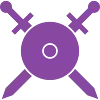在线上玩 麦地那 以及 1045 款其他游戏。
无需下载——直接在浏览器上玩.
与您的朋友以及来自世界各地的玩家一起.
免费。
最近更新
Dear players, a new arena season has started and some options changed for Teotihuacan: City of Gods:
| Previous season | New season |
|---|
| Number of players | 2 | 3 |
查看更多

挑战
全世界最强玩家
成为下一位
麦地那 冠军
游戏信息
设计师
美工
发行方
年份
开发者
总游玩场数
玩家人数
游戏时长
复杂性
策略性
运气成分
互动性
上架时间
Release
العربية
беларуская мова
български език
Brezhoneg
Català
čeština
Dansk
Deutsch
Ελληνικά
English
Español
Eesti keel
فارسی
Suomi
Français
Galego
עברית
Hrvatski
Magyar
Italiano
Bahasa Indonesia
日本語
한국어
Lietuvių
Latviešu
Bahasa Malaysia
Nederlands
Norsk
Polski
Português
Română
Русский язык
Slovenčina
Slovenščina
Српски
Svenska
ไทย
Türkçe
Українська мова
Tiếng Việt
中文 (漢)
中文 (汉)



